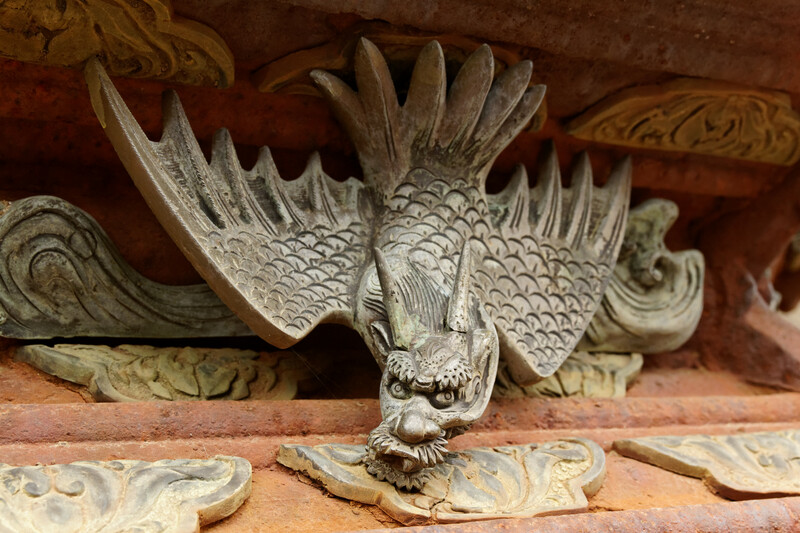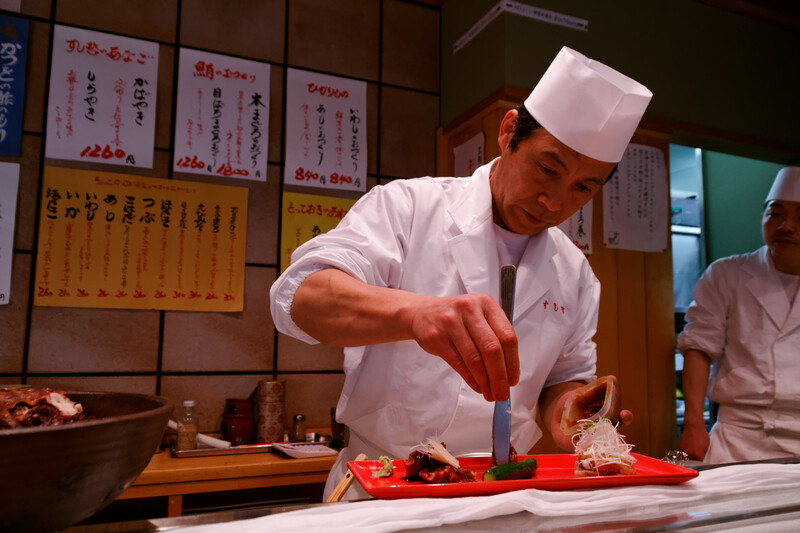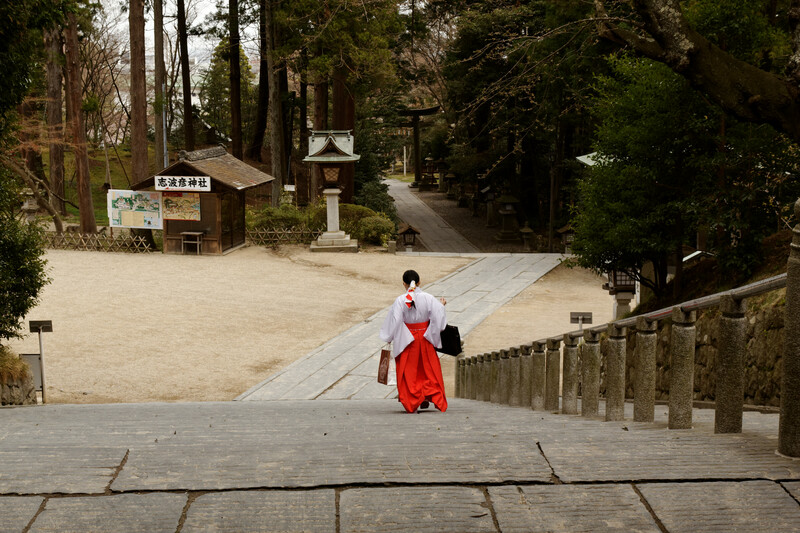Shiogama, sushi city

Shiogama Jinja gate |
We really came to Shiogama because we happened to be passing by on our way from Matsushima Bay to Sendai. But once there, Naito-san wanted to see Shiogama Jinja, one of the most important temples in Tohoku. And, he told me, we had to have sushi, since Shiogama was famous for its sushi. That's no exaggeration. The port unloads more fresh tuna than anywhere else in Japan, and it has the highest density of sushi restaurants on earth. Arriving into Shiogama by boat from Matsushima Bay, I noticed a huge hulking concrete building towering over the harbour. That, the guide told us, was the fish market.
After visiting the shrine we came down from the hill along a road that was surprisingly well-kept. In fact, it seemed quite new. It was just a small two-lane road with sidewalks, but everything was built in newly polished gray stone, with little monuments every hundred meters or so. Along the road were also two little sake breweries. Naito-san thought the road was probably renovated to draw tourism to the shrine, which seemed a sensible thing to do. The railway station down by the harbour was also being redecorated, probably as part of the same effort.

Angry dragon, Shiogama Jinja |
Well back in the city center, we looked for a sushi restaurant, and did not have to look long. Naito-san picked a nondescript dark green concrete building, saying it seemed like a good place. To me it looked pretty run down, but I knew better than to argue. Inside was a tiny narrow space, with stools along a bar, and a couple of tables at the end. Behind the bar some sushi chefs were working. It was lunchtime, and already almost full.
Since we were in Shiogama, we ordered the best-quality sushi lunch, and sat back with a beer, to watch the chefs prepare our lunch half a meter away from us. There's something strangely satisfying about watching people do something they do really well. Hands and knives went dancing over the cutting boards and plates, easily arranging sushi and maki rolls, and grinding wasabi for fresh paste.

Sushi chef at work |
It looked lovely, and it was as good as it looked, melting in the mouth. The rice, especially, was softer and much nicer than I'm used to, but this caused problems. The rice fell apart pretty much every time I tried to lift it out of the soy sauce, in part because I like to use lots of soy.
The cooks enjoyed watching this gaijin struggle with the rice, but one of them wordlessly showed me the solution: push the sushi piece over on its side, then grip it by squeezing the rice against the piece of fish. That worked. I still lost some rice, but no longer made a fool of myself.
I also learned another thing: don't put the wasabi paste in the soy sauce. The wasabi paste is there to balance the fat in the fish, but different kinds of fish have different amounts of fat in them. Therefore, you should smear the paste directly on the fish, and adjust the amount with the kind of fish. Some places they put the wasabi underneath the fish in advance, but here we had to do it ourselves.
As we were eating I heard Naito-san ask one of the cooks something like "blah blah blah tsunami blah ka?" The cook just pointed wordlessly to the wall behind him, where a strip of paper read "H23.3.11" (the date of the tsunami), and "2m 10cm". The tsunami had gone all the way from the harbour, maybe 10 minutes away on foot, and nearly up to the ceiling inside this restaurant. Suddenly the whole place looked different to me.
They were apparently used to this question, because they gave us a little photo album, mostly containing photos taken with mobile phones. The first ones showed the car park just outside, with cars swirling around in the water over a 45-minute period. Then they showed the interior of the restaurant, completely smashed up, with mud smeared on the walls right up to where that strip of paper was now. I'd wondered how they knew how high it had gone, since you couldn't very well stay inside the restaurant watching the water rise, but from the photo there was no doubt.
Well, that explained the new road. It had clearly been restored after the tsunami. It explained all the construction work at the railway station, too. Deep in thought, we walked off to the car rental agency, to go driving into the tsunami zone.

Leaving |
Similar posts
The narrow road to the deep north
Once I'd bought the tickets, the next question arose: where to go
Read | 2012-08-05 09:50
Into the tsunami zone
The March 2011 earthquake and tsunami must be one of the most widely reported stories ever, so does the world really need another account
Read | 2013-01-04 13:54
Comments
No comments.